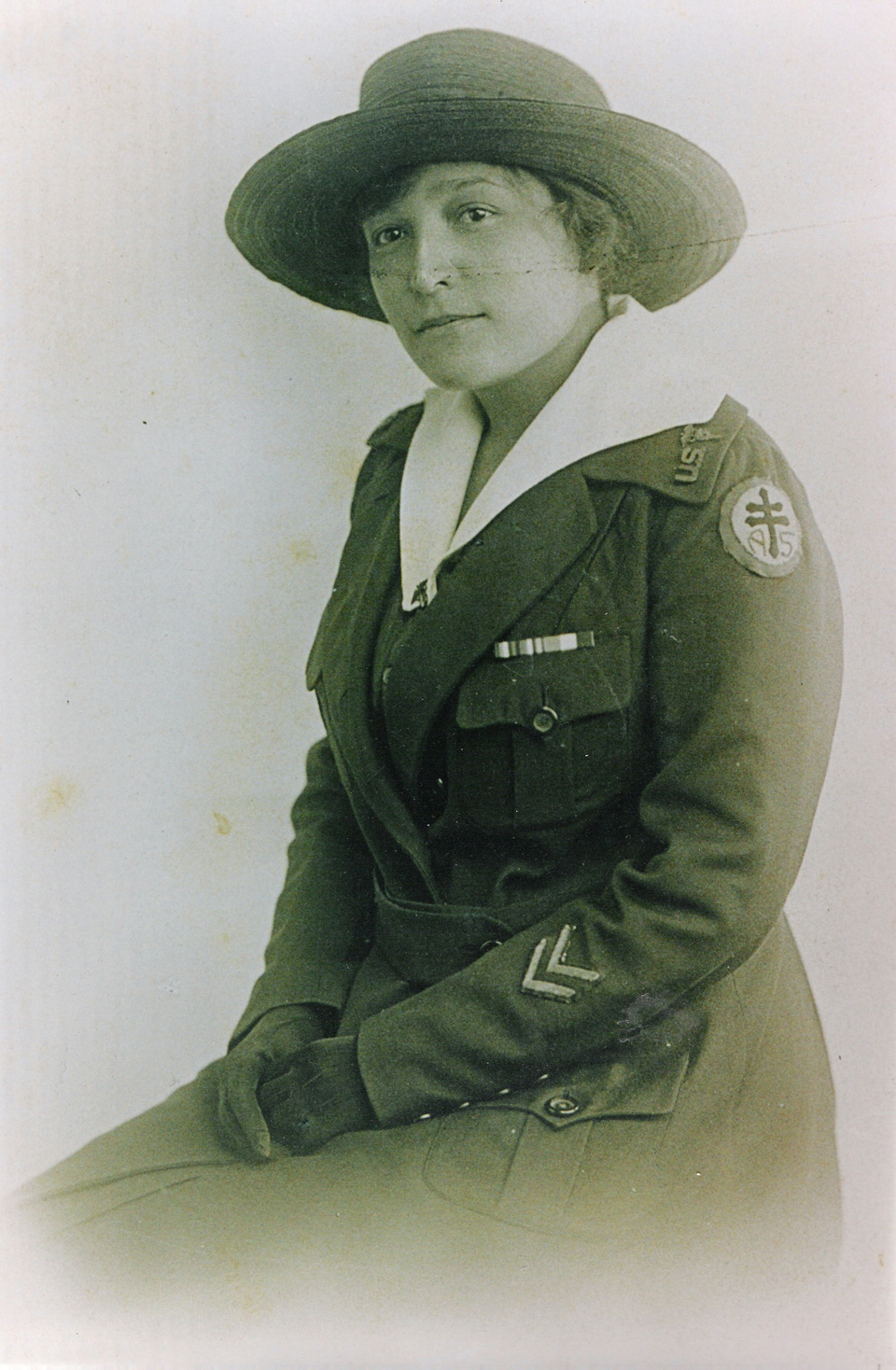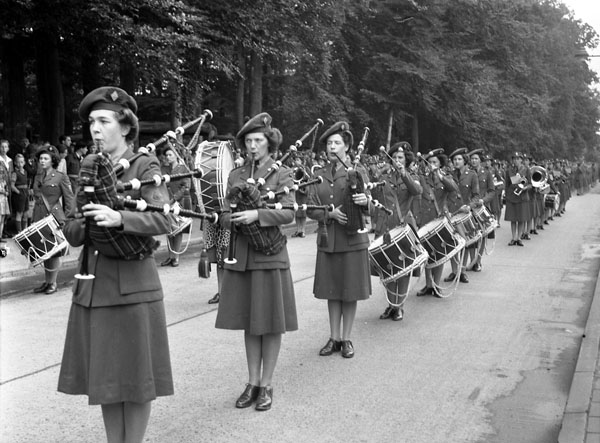Canadian women have served in all three branches of the Canadian Armed Forces, which includes the Royal Canadian Navy, the Canadian Army and the Royal Canadian Air Force. As early as 1885, Canadian women served as nurses in military hospitals during the North-West Resistance. During the First and Second World Wars, women took on various roles in the military as medical personnel and in clerical and administrative positions, trades and intelligence. Women served in the Cold War and during peacekeeping operations. In 1989, the majority of military occupations were open to women, including combat roles. Submarine service was opened to women in 2001. (See also Canadian Women and War.)

Early Military Service
Canadian women first answered the call to military service in 1885 during the North-West Resistance when 12 women served in military hospitals. The first, Loretta Miller, arrived at the Saskatoon Field Hospital on 12 May 1885.
During the South African War, Canada's nurses answered their nation's call to serve, this time overseas. In 1901 the Canadian Nursing Service was established, and women were, for the first time, part of the regular Canadian military rather than part of an ad hoc organization.

First World War
Women were once again called upon as nurses during the First World War, the number volunteering always exceeding the number required. In total, 3,141 Nursing Sisters served in the ranks of the Canadian Expeditionary Force; of that number, 2,504 went overseas on the staffs of military hospitals in England, Egypt, Greece and on the western front in France and Belgium, where they also served in casualty clearing stations close to the front.
At the end of the war, the majority found work in veterans' hospitals or civilian practice, but a core group remained in the military. Near the end of the war, the creation of a Canadian Women's Army Auxiliary Corps, whose members would carry out clerical duties, was being discussed, but the war ended before the organization was created.
Second World War
The tiny peacetime military nursing service of the 1920s and 1930s underwent great expansion again during the Second World War. By 1945, a total of 4,480 nursing sisters had served in the Royal Canadian Army Medical Corps and in the medical services of the Royal Canadian Navy (RCN) and the Royal Canadian Air Force (RCAF). The RCAF also recruited 14 female medical officers, including Jean Flatt Davey, who in 1941 became the first female doctor to receive an officer’s commission in the Canadian armed forces. In June 1942, the Royal Canadian Army Medical Corps began commissioning female physicians; the women received the same rank and pay as men and served as anesthetists, bacteriologists and radiologists in hospitals. The navy also commissioned female medical doctors during the war. According to a Globe and Mail article from January 1945, there were 58 women doctors in the armed forces at that time, including six serving overseas.
During the war, the demands of women for a larger role and shortages of manpower resulted in the further employment of Canadian women in many military trades that previously had been closed to them. Following the organization of the Canadian Women's Army Corps and the Royal Canadian Air Force (Women's Division) in 1941, and the Women's Royal Canadian Naval Service in 1942, a total of 45,445 women entered the wartime forces. They served as clerical, administrative, communications, trades, and other kinds of support personnel, thereby releasing men for combat. Like the members of the medical services, they saw duty in the rear areas of fighting theatres.
In 1946 the three women's services were disbanded. The words of one senior naval officer described the sentiment of members: "It seems impossible that there should be a Navy without them... it is going to be hard for many who have remained to realize that they were, in actual fact, an emergency force." Only a small number of nurses remained in uniform.
Cold War
As the Cold War unfolded, the Canadian forces expanded once more. In 1951 the reserve elements of all three services began to recruit women, as did the regular air force. In 1954-55 the regular army and navy also began to recruit women, although in much smaller numbers than the 3,000 women then in the air force. By 1966, however, reductions in the size of the Canadian forces, automation in trades staffed by women, and difficulties in recruiting, at least partly because of the limited careers available to women, reduced their total number in the regular services to fewer than 900. (See also Canadian Women in the Cold War Navy and Nursing Sisters.)
Take the quiz!
Test your knowledge of women in the Canadian military by taking this quiz, offered by the Citizenship Challenge! A program of Historica Canada, the Citizenship Challenge invites Canadians to test their national knowledge by taking a mock citizenship exam, as well as other themed quizzes.
Full Integration of Women in the CAF
By the mid-1960s, the government of the day wanted the Canadian forces to mirror society, where women were increasingly part of the paid labour force. The government used that mandate for guidance on the recruitment and employment of women. Other political influences, such as the 1971 Royal Commission on the Status of Women and the Canadian Human Rights Commission ruling of 1989, combined with military trials of women's effectiveness in non-traditional roles, systematically removed the barriers to full and equal service by women in the Canadian Forces.
In 1989, Heather Erxleben became the first woman in Canada to serve in the regular force infantry. Women like Erxleben took on new challenges with the added pressure of being the first. The last barrier to full integration in the Canadian Armed Forces (CAF), prohibition on service in submarines, was reversed in 2001.

Current Military Service
While the participation rate of women in the Canadian military is not equal to that of men, nor are women equally represented in all trades, much has changed from the re-creation of women's services for peacetime duty.
By February 2018, 15.3 per cent of CAF personnel, 4.3 per cent of combat personnel and 17.9 per cent of all CAF officers were women. Of the 14,434 women serving, 7,408 were in the Army, 2,856 in the Royal Canadian Navy and 4,160 in the Royal Canadian Air Force. A year later, 4.8 per cent of combat personnel in the regular force and primary reserve were women. By February 2020, women made up 16 per cent of CAF personnel: 19.1 per cent of officers and 15.1 per cent of non-commissioned members. The percentage of women was highest in the navy (20.6 per cent), followed closely by the air force (19.8 per cent). Women comprised 13.5 per cent of the Canadian army in 2020.
As of December 2024, women comprised approximately 16.6 per cent of the regular force and primary reserve in the CAF: 19.9 per cent of officers and 15.5 per cent of non-commissioned members. Women made up 20.6 per cent of the navy, 20.2 per cent of the air force, and 14.2 per cent of the army.
As of 2025, approximately 40 women had been promoted to flag officer (navy) or general officer (army/air force) rank in the Canadian Armed Forces. Sheila Hellstrom became the first female brigadier-general in 1987. Wendy Clay was the first woman promoted to major general (1994) and Chris Whitecross was the first female lieutenant-general (2015). In the navy, Laraine Orthlieb became the first woman to hold flag rank when she was promoted to commodore in 1989. In 2011, Jennifer Bennett became the first woman promoted to rear admiral. In 2021, Josée Kurtz became commandant and vice-chancellor of the Royal Military College of Canada, the first woman to hold this appointment. In July 2024, Jennie Carignan became the first female to be promoted full general and be appointed chief of the defence staff. On 10 July 2025, Lt.-Gen. Jamie Speiser-Blanchet became the first woman to command the RCAF.
Peacekeeping
Though in small numbers, women have also been involved in military peacekeeping. During the Vancouver UN Peacekeeping Defence Ministerial Conference in 2017, the federal government announced the Elsie Initiative for Women in Peace Operations. The goal of the Elsie Initiative is “to help increase the meaningful participation of women in UN peace operations.” In July 2023, a total of 57 Canadians were involved in UN peace operations. This included 19 women — 14 police officers, three “experts on mission” and two staff officers. In April 2024, twelve Canadian women were employed in UN missions: 10 police officers and one staff officer in Congo (MONUSCO) and one staff officer in Sudan (UNMISS). Women represented about 30 per cent of the Canadian contingent of UN peacekeepers in 2023 and 2024. In March 2025, a total of 24 Canadians were involved in UN peace operations; this included two women employed as police officers in MONUSCO.

 Share on Facebook
Share on Facebook Share on X
Share on X Share by Email
Share by Email Share on Google Classroom
Share on Google Classroom

















